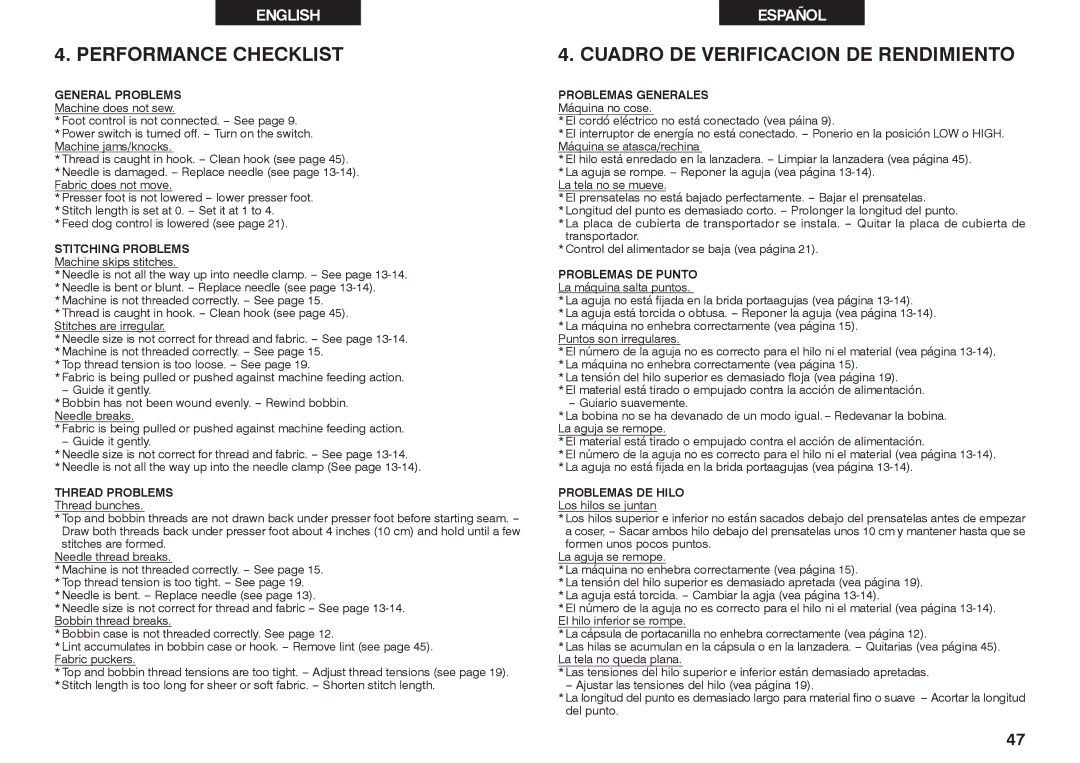2639 specifications
The Singer 2639 is a versatile sewing machine designed to cater to the needs of both beginners and experienced sewists. Combining ease of use with advanced features, this model stands out in the realm of home sewing, making it a popular choice for various sewing projects.One of the key features of the Singer 2639 is its selection of built-in stitches. With a total of 97 stitch options, including essential, decorative, and stretch stitches, users can choose the perfect stitch for their projects, whether they are quilting, crafting, or doing basic repairs. This variety allows for creativity and flexibility, accommodating the needs of different sewing tasks.
Another significant aspect of the Singer 2639 is its automatic needle threader. This technology simplifies the sewing process by allowing users to thread the needle with just a push of a lever, eliminating the frustration often associated with manual threading. Coupled with the drop-in bobbin system, which makes it easy to insert and remove the bobbin, the machine ensures a smooth and uninterrupted sewing experience.
The Singer 2639 also features adjustable stitch length and width, enabling users to customize their stitches according to the fabric and project requirements. This adaptability makes it suitable for various materials, from lightweight fabrics to heavier denim or canvas. Furthermore, the machine is equipped with a powerful motor that provides strong stitching capabilities, ensuring that even tough materials are handled with ease.
The free arm design of the Singer 2639 enhances its usability, making it ideal for sewing cylindrical items like sleeves and legs of pants. This feature, combined with the included accessories such as various presser feet and a variety of needle types, allows sewists to tackle intricate designs and unconventional shapes effectively.
User-friendly and lightweight, the Singer 2639 is portable, making it easy to transport for sewing classes or workshops. Its straightforward control panel and clear instructions make it accessible for beginners, while the range of features keeps more seasoned sewers engaged.
In summary, the Singer 2639 combines a wealth of features, advanced technologies, and a user-friendly design, making it a fantastic choice for sewists of all levels. Its versatility, power, and ease of use truly set it apart as a reliable companion for every sewing enthusiast. Whether embarking on simple repairs or complex projects, the Singer 2639 proves to be an invaluable tool in the world of sewing.
